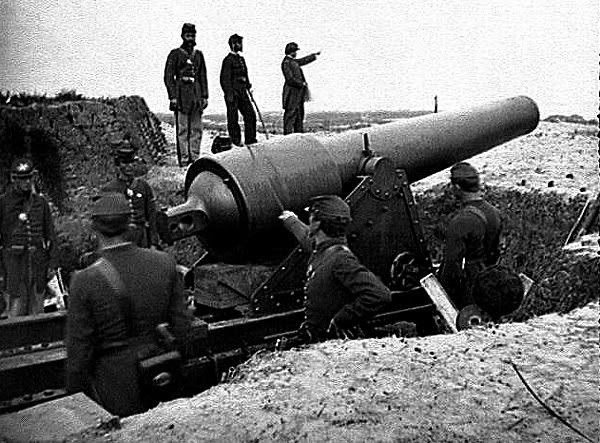Guest
Dan Phariss said:roundball said:
Not all failures, then or now, are the result of loading errors.
Its a Parrot Rifle by the reinforced breech design, 200 pounder at least since a 100 pounder was 6.2" bore. Looks several feet are missing. They shot shells not balls. It likely shot about 150-200 pounds of very large grain powder. Burst iron guns was common in the Civil War and considerable study was done in how they were cast and designed but the problem did not disappear until breechloaders came into use.
A large gun on the USS Princeton burst and killed the Secretary of the Navy and the Secretary of State in 1844. The other large gun on the Princeton had been reinforced because it had cracks in it, I have read.
It is also possible it was struck by return fire. But the broken timbers below the "break" seem to indicate it blew off at that point.
200 pounder Parrott

Search Yahoo for "200 pounder Parrott rifle" to find a series of photos including this one and several views of the shells of various sizes.
Dan
Actually, I believe the top photo is the 300lb Parrott, named the Swamp Angel, judging by the scale of the men to the tube.
This sort of catastrophic failure was actually common with Parrott tubes. So much so, that in 1889, The New York Times called on the Ordnance Bureau of the War Department to discontinue use of the Parrott Gun altogether, following a series of mishaps at the West Point training grounds.
The reason for this tube's failure, as I understand it, six incendiary shells had exploded prematurely in the bore, add to that, the stress caused by the long-range loads.
After the war, sold as scrap, the Swamp Angel was moved to Trenton, New Jersey, where it still rests today as a CW memorial at Cadwallader Park. Somewhere, its wrought iron sleeve was removed.
Swamp Angel as it rests today







